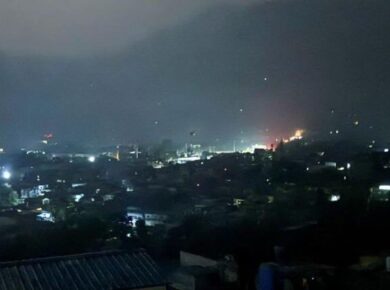Mountains and Plateaus
Mountains
- Part of land > 900 mts height
- With slope ~ 25 – 30*
- Mainly of four types viz.
- Fold Mountains
- Block Mountains
- Volcanic Mountains
- Residual / Dissected / Relict Mountains
Fold Mountains
- Formed by folding of geosyncline sediments under compressible tectonic forces
- For Ex. Himalaya, Alps, Rockies, Andes, Alapchhian, Ural, Aravalis
- Since the rock strata have been elevated to great heights, Fold Mountains are also called mountains of elevation
- Are closely associated with volcanic activities.
- Contains many active volcanoes, especially in circum Pacific fold mountain system
- Are rich in mineral resources such as Tin, Copper, Gold & Petroleum
Block Mountains
- Formed due to faults caused by tension or compression forces which lengthen or shorten earth’s crust
- It causes a section of it to subside or rise above the surrounding level
- For Ex. Vosges (France), Black Forest (Germany)
- Faulting results in formation of Block Mountains & their counterparts in rift valleys
- In general, large scale Block Mountains & rift valleys are due to tension rather than compression.
Volcanic Mountains
- Also known as mountains of accumulation
- Formed due to accumulation of thick lava as a result of volcanic eruption
- Common in circum pacific belt
- For Ex. Fuji Yama (Japan), Mt. Popa (Myanmar), Mt. Mauna loa (Hawai), Mt. Mayon (Phillipines), Mt. Agung (Bali), Mt. Merapi (Sumatra) & Mt. Catopaxi (Euador)
Residual / Dissected / Relict Mountains
- Formed due to waning of previously existing elevated regions by erosion
- For Ex. Nilgiris, Parshavnath, Hills of Peninsula India, Mt. Manodnock (USA)
- Mountains evolved by denudation, where the general level of land have been lowered by agents of denudation; also known as mountains of denudation
Plateaus
- An elevated area compared to its surroundings, having a large almost flat top area (Also known as tableland)
- Like all highlands, Plateaus are also subjected to erosional processes, as a result their original characteristics are highly altered
- According to their mode of formation & their physical appearance, plateaus may be divided into 3 types viz.
Tectonic Plateaus
- Formed by earth movements which causes uplift, of a considerable size with fairly uniform altitude
- For ex. Deccan plateaus, Mesera plateau (tilted of central Iberia) & Harz plateau (Faulted of Germany)
- When plateaus are surrounded by mountains they are known as inter-montane plateaus for ex. Tibetian plateau, Bolivian Plateau
- When plateaus are surrounded by sea or plains they are known as Continental Plateaus For ex. Deccan plateau, Greenland plateau, South Africa plateau
Volcanic Plateau
- Molten lava from the volcanic eruption may solidify to form successive sheets of basalatic lava, known as Lava plateau
- For ex. Antrim Plateau of Northern Island, NW part of Deccan Plateau & Columbia Snake Plateau (Biggest one)
Dissect Plateaus
- Formed due to continuous weathering & erosion by running water, wind & ice
- High plateaus worn down & their surface becomes irregular
- For Ex. Scottish Highland
Generally Plateaus have rich mineral resources & have been actively mined for ex.
- African plateau yields gold, diamonds, copper, Manganese & Chromium.
- Brazilian plateau yields iron & Manganese
- Deccan Plateau Yields Manganese, Iron & Coal
- Western Australian plateau yields Gold & Iron














1 comment
thankyou very much to share the knowledge.